BELL TARGET SHOOTING
The Equipment: rifles and pellets
Rifles
| With practise and competition the standard of shooting
improved, demanding more powerful and accurate air rifles. |
|
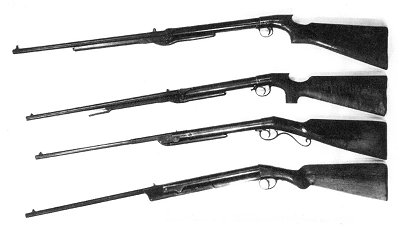
Lincoln B.S.A. Militia and Original air rifles.
|
The early Gems and Britannias came to be replaced by Lincoln Jeffries and B.S.A.
Also
available were imported German models, Haenal and Militia.
These were
followed by the Webley and Scott Mk. III sporting version in .177
calibre, fitted with match sights. |
| Then, as now, harder competition demanded better and more advanced
sights. The early air rifles relied on the simple vee and blade. But the
orthoptics clamped under the caps and hats of the .22 men, and their
adjustable backsights, would not be lost on the bell target fraternity.
They had one of the best sight manufacturers in the world on their
doorsteps and it was not long before adjustable peep sights were being
fitted to their Lincoln and B.S.A. rifles: A.G. Parker, "old Alf", a
well known marksman with the full-bore rifle, was making first class
sights for the Wimbledon, and then Bisley, competitors. Miss E. R. Parker, (Eleanor, his daughter), still runs the firm. One of
the publications to be found on my bookshelf is her excellent book "A
Century of Sights and Shooting Aids", signed by the good lady herself,
showing again the impact that the Midlands has had on British shooting
and the tools of the trade, as well as the excellence of marksmanship.
|
|
 |
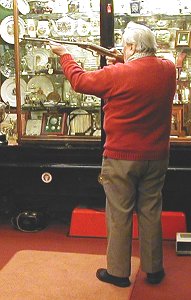 |
|
I am not the world's tallest chap but, in the left
photo, you get an idea of how small and light the old bell target rifles
were. On the right, again standing in the Museum of Marksmanship,
I am demonstrating the position the old bell target shooters would have
adopted. |
| The stance used by the air gunners was the standard one for those days.
The weight of the body was thrown slightly forward, the marksman leaning
towards the target with the stock of the rifle held in the cup of his
hand. This stance served them well, especially when they were using very
lightweight rifles for short periods. But with heavier rifles and longer
shooting sessions this stance soon caused tiredness and thus
unsteadiness. In the modern stance, which bell target shooters would
adopt to-day along with everyone else, has the body upright, so that the
whole frame, not just the arm and shoulder support the weight; and the
stock is supported on the fist.
Pellets |
|
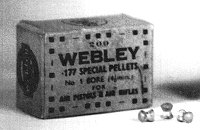
|
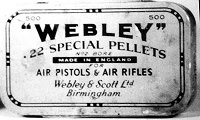
|
|
Early pellets and their cardboard box container and
an early tin of pellets. |
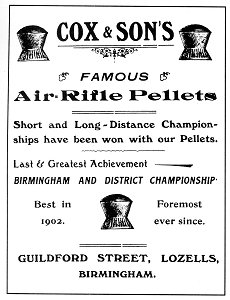 |
Pellets, from a number of makers, were widely available in shops. But
every shooting pub had a "penny in the slot" machine that dispensed so
many pellets per coin.
It was more convenient to the poorer club shooter
to purchase his pellets this way as the best "Arrite" pellets cost 1
shilling (5p) per thousand.
They were hand cast and examined for flaws
or damage in the same way as a participant would in the higher echelons
of today's National Squad membership. |
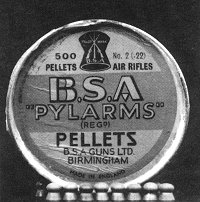
 |
|
 |
Return to the
previous page |
|
Proceed to the
next page |
|